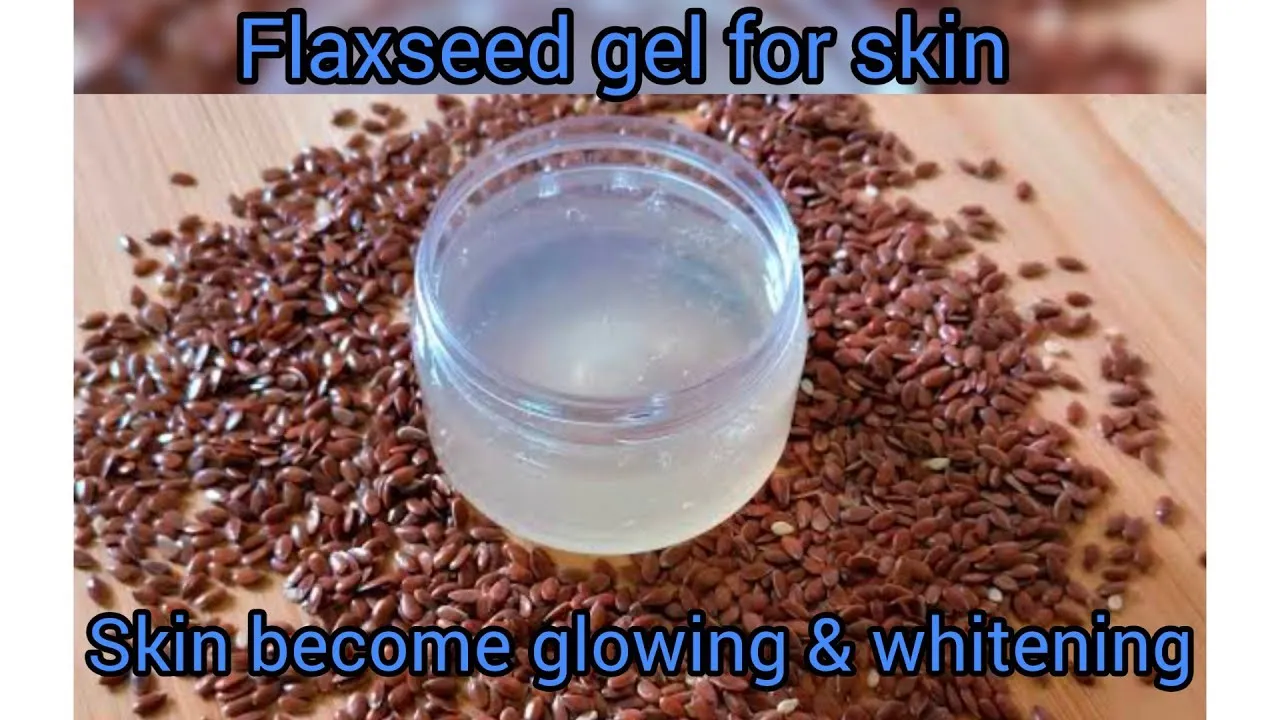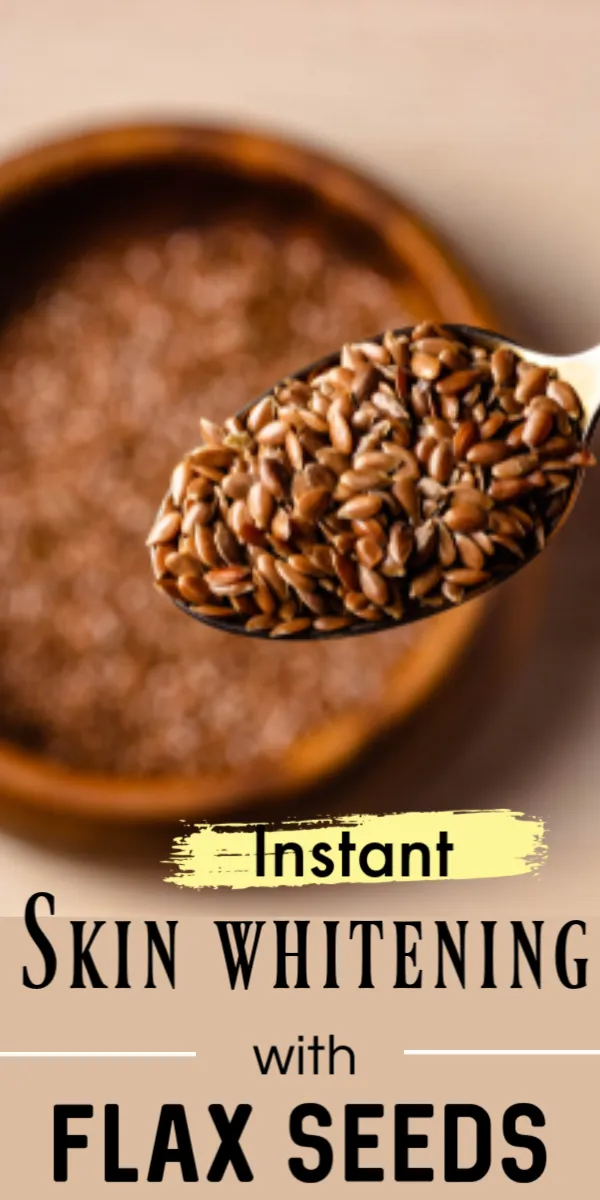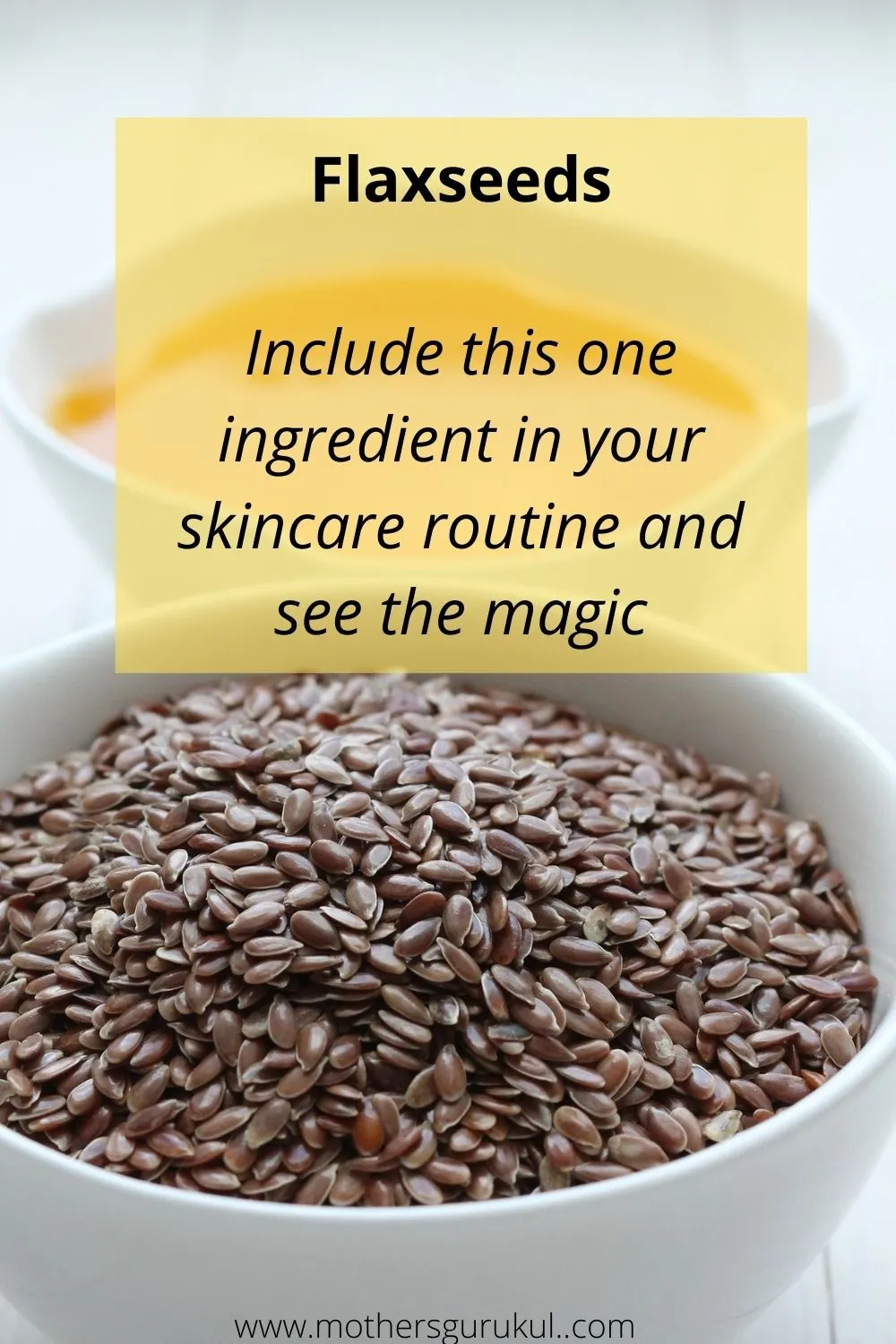Are you seeking a natural pathway to achieve radiant, glowing skin? Flax seeds, tiny powerhouses of nutrients, have emerged as a popular ingredient in skincare. Known for their numerous health benefits, flax seeds can also play a significant role in enhancing skin health and promoting a brighter complexion. This article dives into the science-backed benefits of flax seeds for skin whitening and provides practical ways to incorporate them into your beauty routine. Discover how you can harness the power of flax seeds to achieve a natural, healthy glow.
Understanding Flax Seeds and Skin Health
Flax seeds, also known as linseeds, are packed with essential nutrients that benefit the skin. They are a rich source of omega-3 fatty acids, antioxidants, and lignans, all of which contribute to skin health. These components work synergistically to combat skin issues and enhance the skin’s natural radiance. Regular use of flax seeds can lead to noticeable improvements in skin tone, texture, and overall appearance. Incorporating flax seeds into your skincare routine is a holistic approach to achieving and maintaining healthy, glowing skin.
Benefits of Flax Seeds for Skin
The benefits of flax seeds for skin are numerous, stemming from their unique nutritional profile. From reducing inflammation to promoting hydration, flax seeds offer a wide range of advantages for achieving a healthy complexion. By understanding these benefits, you can effectively use flax seeds to address specific skincare concerns and achieve your desired results. The key lies in understanding how these components interact to create a positive impact on your skin’s overall health and appearance.
Rich in Omega-3 Fatty Acids

Omega-3 fatty acids are crucial for maintaining healthy skin. They help in reducing inflammation, which can alleviate conditions like acne, eczema, and rosacea. These fatty acids also play a vital role in maintaining the skin’s natural barrier, preventing moisture loss and keeping the skin hydrated. By incorporating flax seeds into your diet or applying them topically, you can ensure your skin receives the necessary omega-3s to stay healthy and radiant. Regular intake of omega-3s will help improve skin elasticity and reduce the appearance of fine lines and wrinkles.
Antioxidant Properties
Flax seeds are loaded with antioxidants, which combat free radicals that damage skin cells. These antioxidants help protect the skin from environmental stressors like pollution and UV radiation, which can accelerate aging and cause skin discoloration. Regular consumption of flax seeds can neutralize these free radicals, leading to a brighter and more youthful complexion. Incorporating flax seeds into your diet is a proactive step in defending your skin against premature aging and maintaining a healthy, glowing appearance. Their antioxidant properties help improve skin tone and reduce the appearance of dark spots.
Hydration and Moisturization
Flax seeds are excellent for hydrating and moisturizing the skin. They contain properties that help the skin retain moisture, making it appear plumper and more supple. Using flax seed-based products can soothe dry, irritated skin, leading to improved texture and a healthier glow. The natural oils in flax seeds create a protective barrier, preventing water loss and maintaining optimal hydration levels. This is especially beneficial for those with dry or sensitive skin, promoting a more comfortable and radiant complexion. Using flax seeds will enhance your skin’s natural ability to retain moisture, resulting in a youthful glow.
Different Ways to Use Flax Seeds for Skin Whitening

There are various ways to use flax seeds for skin whitening, from face masks to scrubs and oils. Each method offers unique benefits and caters to different skincare needs. Experimenting with these methods will allow you to find the most effective way to integrate flax seeds into your routine. Proper application and consistency are key to maximizing the benefits of flax seeds, providing noticeable improvements in skin tone and texture. Whether you are looking to address hyperpigmentation, uneven skin tone, or overall dullness, flax seeds provide a versatile solution for radiant skin.
Flax Seed Face Mask Recipe
Ingredients and Preparation
To create a flax seed face mask, you will need: 1 tablespoon of ground flax seeds, 2 tablespoons of plain yogurt, and 1 teaspoon of honey. Mix these ingredients in a bowl until you achieve a smooth, consistent paste. The yogurt provides lactic acid, which helps exfoliate the skin, while honey adds moisturizing properties. The ground flax seeds will provide the nutrients and antioxidants that promote skin whitening. Making your own face mask is a simple and effective way to incorporate flax seeds into your skincare routine, giving your skin a healthy glow.
Application and Usage

Apply the flax seed face mask evenly to your clean face and neck. Let it sit for 15-20 minutes, allowing the nutrients to penetrate your skin. Gently rinse the mask with lukewarm water and pat your face dry. Use the mask 1-2 times per week for optimal results. Regular use will help lighten the skin and improve its overall health. The combination of flax seeds, yogurt, and honey will provide a nourishing treatment, leaving your skin refreshed and radiant. Be sure to perform a patch test before applying the mask to your entire face to check for any allergic reactions.
Flax Seed Scrub for Exfoliation
Preparation and Application
Combine ground flax seeds with a gentle exfoliating agent like brown sugar or finely ground oats to create a flax seed scrub. Mix equal parts of ground flax seeds and your exfoliating agent, then add a carrier oil such as olive oil or jojoba oil to form a paste. Gently massage the scrub onto your face in circular motions to remove dead skin cells and impurities. Rinse thoroughly with lukewarm water. Using a flax seed scrub once or twice a week can help brighten your skin, even out skin tone, and promote a healthy glow. This exfoliating action will allow your skin to better absorb other skincare products.
Flax Seed Oil for Direct Application

Application Methods and Precautions
Flax seed oil can be applied directly to the skin. Apply a few drops of flax seed oil to your face and neck after cleansing and before moisturizing. Gently massage the oil into your skin until absorbed. Perform a patch test on a small area of skin before using it on your entire face, to check for any allergic reactions. Flax seed oil can help moisturize the skin, reduce inflammation, and improve skin elasticity. Flax seed oil will improve your skin’s texture and give it a healthy radiance, by keeping it supple. Ensure the oil is stored properly in a cool, dark place to maintain its quality.
Integrating Flax Seeds into Your Diet
In addition to topical applications, incorporating flax seeds into your diet is another effective method for achieving skin-whitening benefits. Consuming flax seeds provides the body with essential nutrients that promote skin health from within. Adding flax seeds to your daily meals is a simple way to boost your nutrient intake and support your skin’s natural radiance. The key is to make this a consistent practice, ensuring that your body receives a steady supply of these beneficial compounds.
Flax Seeds in Smoothies

Adding a tablespoon of ground flax seeds to your morning smoothie is a convenient way to boost your intake of omega-3 fatty acids and antioxidants. Blend flax seeds with fruits, vegetables, and other nutritious ingredients for a healthy and delicious start to your day. This simple addition can improve skin health, providing essential nutrients that contribute to a brighter complexion. Smoothies offer a customizable option, allowing you to tailor your intake to suit your taste and dietary needs. Consuming flax seeds in smoothies enhances their absorption by the body.
Flax Seeds in Yogurt and Oatmeal
Sprinkle ground flax seeds on your yogurt or oatmeal for an easy and nutritious addition to your breakfast or snacks. This simple step increases your intake of essential fatty acids and antioxidants, which help to maintain healthy, glowing skin. Combining flax seeds with other nutrient-rich foods amplifies their benefits and supports your overall well-being. This approach is versatile and fits easily into any lifestyle, boosting your skin’s radiance with minimal effort. Making flax seeds a regular part of your diet enhances your skin’s natural glow.
Important Considerations and Precautions
While flax seeds offer numerous benefits for skin whitening, it is essential to be aware of certain considerations and precautions. These steps ensure you can safely and effectively incorporate flax seeds into your skincare routine and diet. Understanding potential risks and knowing how to address them will help you achieve the best possible outcomes. Prioritizing safety and consulting with healthcare professionals when necessary ensures a healthy and beneficial experience with flax seeds.
Allergy Awareness and Testing

Before using flax seeds, it’s important to be aware of potential allergic reactions. Perform a patch test by applying a small amount of flax seed product to a discreet area of your skin, such as your inner arm, and wait 24 hours to observe for any adverse reactions like redness, itching, or swelling. If any irritation occurs, discontinue use immediately. Consulting with a healthcare professional is recommended if you suspect an allergy or experience persistent skin issues. This careful approach helps you safely integrate flax seeds into your routine and minimize risks.
Consistency and Patience
Achieving skin-whitening results with flax seeds requires consistency and patience. Noticeable improvements typically take several weeks or months of regular use. Be consistent with your routine, whether applying face masks, scrubs, or incorporating flax seeds into your diet. Avoid expecting immediate results, as natural skincare methods often work gradually. Maintaining a consistent approach allows your skin to adapt and benefit fully from the nutrients in flax seeds. Stay dedicated to your routine, and celebrate the subtle but significant changes in your skin’s appearance over time.
Consulting a Dermatologist
If you have specific skin concerns or medical conditions, consult a dermatologist before using flax seeds. A dermatologist can provide personalized advice and determine if flax seeds are appropriate for your skin type and needs. They can also help you integrate flax seeds into a comprehensive skincare plan. This consultation is essential if you are dealing with severe skin issues or considering flax seeds as a part of a treatment plan. Seeking professional advice guarantees the best outcomes and avoids potential adverse effects, ensuring that you utilize flax seeds safely and effectively.
In conclusion, flax seeds offer a natural and effective way to enhance skin health and achieve a radiant complexion. From providing essential nutrients to promoting hydration and reducing inflammation, flax seeds provide a holistic approach to skincare. By incorporating flax seeds into your routine through face masks, scrubs, and dietary changes, you can unlock their potential to brighten and revitalize your skin. Remember to practice consistency, patience, and consult with a healthcare professional when needed. Embrace the natural power of flax seeds and embark on your journey toward healthy, glowing skin. Begin your flax seeds skincare journey today and reveal your most radiant self.
